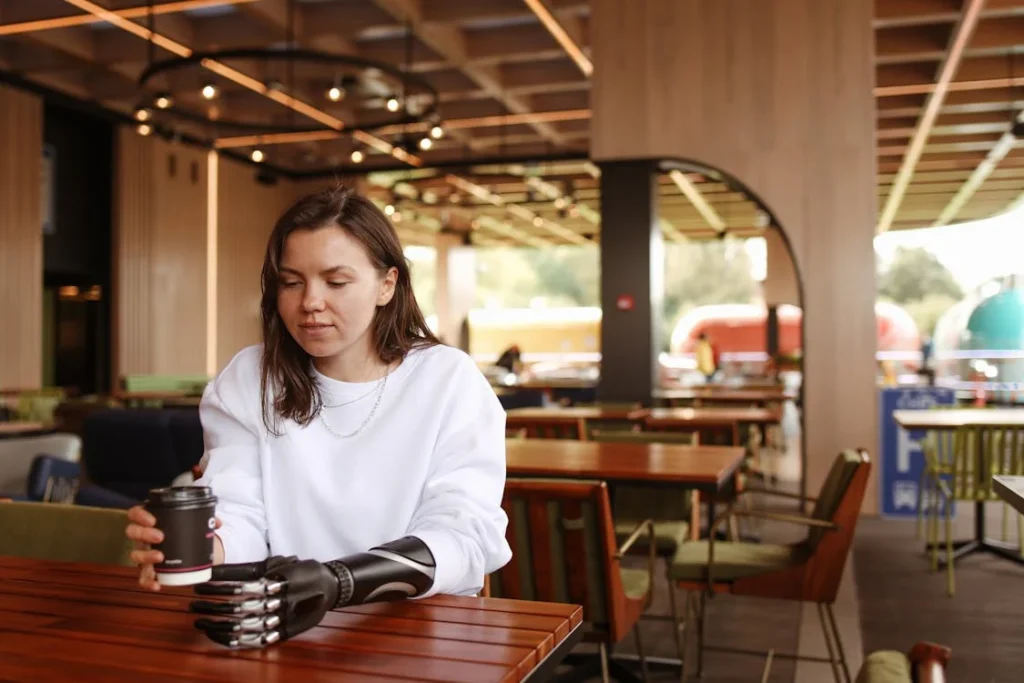Getting a new prosthetic limb can be a big change for a child. It’s a moment filled with many emotions—hope, worry, excitement, and sometimes fear. As a parent, you want to do everything you can to make this transition smooth and positive. But it’s not always easy to know where to start.
Children react to prosthetics in their own way. Some adapt quickly, while others need more time. What matters most is giving them the space, support, and confidence to feel comfortable with their new limb. This process isn’t just physical. It’s also emotional, social, and even playful. With the right guidance, the prosthetic can become not just a tool, but a part of their life that helps them move freely, try new things, and grow with confidence.
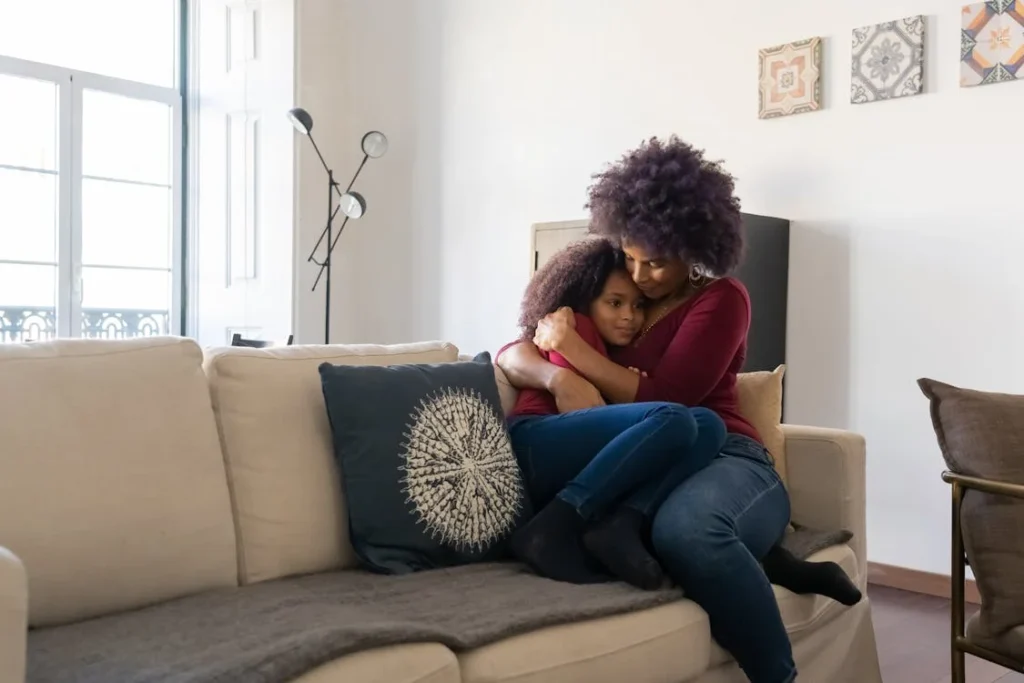
Understanding Your Child’s First Reactions
The Emotional Impact of a New Prosthetic
When your child first receives a prosthetic limb, their reaction may not be what you expect. Some children are excited right away.
Others might feel nervous, unsure, or even disappointed. These reactions are completely normal. A prosthetic is something new on their body.
It looks different. It feels different. It moves in ways they’re not used to. It can take time for them to trust it.
As a parent, your role is to stay patient and calm. Give your child space to talk about how they feel, but don’t rush them to explain everything.
Sometimes, kids can’t find the right words to describe what they’re experiencing. You might notice signs through their behavior—maybe they avoid wearing the prosthetic, or they get quiet when you talk about it.
These are gentle signs that they need more time to adjust.
Reassure them that it’s okay to feel unsure. You don’t need to fix every emotion. Just listening, being near them, and reminding them that they are still the same strong, loved child can go a long way.
If your child is open to it, you can share stories of others who use prosthetics. Seeing someone else doing everyday things with a prosthetic helps build belief that they can too.
Sometimes, children might also feel frustrated if the prosthetic doesn’t work exactly how they hoped right away. It may take effort to walk steadily or to pick up objects with control.
In these moments, help your child focus on effort, not results. Celebrate the small tries. Over time, these become big wins.
Building Comfort with the Prosthetic
One of the first goals after receiving a prosthetic is to help your child get used to how it feels. At first, they may find it heavy or awkward.
The skin around the socket may feel tight or sensitive. Movement might feel stiff. These sensations usually improve as their body gets used to the device.
Let your child wear the prosthetic for short periods at the beginning. You can start with a few minutes at home—perhaps during a favorite activity—then slowly increase the time as they feel more comfortable.
This gentle approach prevents discomfort and builds trust. You’re showing them that this new limb isn’t something to fear. It’s something they can learn to use, little by little.
Make sure the fit feels right. If your child says it hurts or if you see redness that doesn’t go away, talk to your prosthetist.
A good fit is essential. When the prosthetic feels secure and natural, children are more likely to use it without hesitation.
Encourage your child to move in ways that feel safe. Walking around the house, using the arm to hold soft objects, or even simple games can help them learn balance and motion.
Let them move at their own pace. Don’t push them into activities too fast. Instead, let their comfort lead the way.

Helping Your Child Gain Confidence in Daily Life
Creating a Safe and Supportive Routine at Home
Once your child starts wearing their prosthetic more often, the next step is helping them use it during everyday activities. These are the small, daily moments that help them feel more independent—like putting on clothes, brushing teeth, eating meals, or picking up toys.
The goal here isn’t to do everything perfectly. It’s about trying, learning, and building comfort in small steps.
The home is the best place to start because it feels familiar and safe. Choose a calm time of day when your child isn’t rushed or tired.
Invite them to use the prosthetic during one simple task. If it’s an arm prosthetic, maybe they try holding a toothbrush or turning a page. If it’s a leg prosthetic, maybe they take a few steps between rooms with support nearby.
Celebrate even the smallest progress, like standing up for a few seconds or reaching for something with their new limb.
Encourage practice, but don’t turn it into a test. It’s okay if your child wants to use their other hand or needs help.
The key is showing that the prosthetic is part of their body, not a replacement for it. Over time, as they succeed in small moments, their confidence grows naturally.
As your child becomes more active, daily routines may also need small adjustments. Place items within reach, clear the floor of obstacles, and create spaces where your child can sit or stand comfortably while using the prosthetic.
These simple changes make it easier for your child to succeed—and they notice that the environment is made to support them, not challenge them.
Encouraging Movement Through Play
Children learn best when they’re having fun. Play is one of the most powerful tools to help your child feel confident with a new prosthetic. It gives them a reason to move, explore, and discover how their body works in new ways.
Start with activities they already enjoy. If your child likes building with blocks, encourage them to use their prosthetic hand to pick pieces up. If they love dancing, let them try moving to music while wearing their leg prosthetic.
These playful moments take the focus away from the prosthetic itself and put it back on the joy of movement.
Games that involve light movement and coordination can be especially helpful. Simple tasks like rolling a ball, stacking cups, or reaching for objects on a shelf can improve control without feeling like hard work.
Over time, these movements build strength, balance, and muscle memory.
Let your child explore new types of play too. They might be drawn to different toys, puzzles, or movement games now that they have a new way to interact with the world.
Be open to these changes. They show that your child is adapting and discovering what feels good.
Encouraging play doesn’t mean everything has to go smoothly. Your child might drop something, lose balance, or get frustrated. That’s okay. Stay nearby, offer support if needed, and remind them that everyone learns by doing—even adults.
What matters most is helping your child see their prosthetic not as a challenge, but as a part of their growing abilities.

Supporting Emotional Growth Alongside Physical Progress
Helping Your Child Feel Proud, Not Different
As your child learns to use their new prosthetic, it’s not just about movement and tasks—it’s also about how they feel about themselves. Children notice differences, both in their own bodies and in how others respond to them.
They may wonder if they still fit in with their friends or feel unsure about how others see them. This is where emotional support becomes just as important as physical support.
Let your child know that it’s okay to feel a mix of emotions. Some days they may feel proud of their progress. Other days they may feel sad, angry, or frustrated. These feelings don’t mean something is wrong.
They’re part of adjusting to something new. What helps most is your calm presence. When you stay open, warm, and nonjudgmental, your child knows it’s safe to express how they feel.
Children need to hear that their prosthetic does not define them. It’s something they use—not something they are. Talk openly about how their body is unique, and how everyone has something that makes them different.
You don’t need to give long speeches. A few honest, caring words—shared at the right time—can make your child feel seen and accepted.
Over time, invite your child to share what they like about their new abilities. Maybe they’re proud of walking farther than before. Maybe they figured out how to hold a spoon or carry a toy.
Celebrate these moments with them. Not just for the task they completed, but for the courage they showed in trying. This builds pride from the inside out.
Managing Social Situations With Friends and Classmates
Going back to school or playing with friends can feel like a big step when your child has a new prosthetic. They may worry about being asked questions or feeling left out.
As a parent, you can help prepare them for these moments, and teach them how to handle attention or curiosity in a way that feels comfortable.
Start by asking your child how they want to talk about their prosthetic, if the topic comes up. Some kids like to explain it in simple terms.
Others may prefer to change the subject or say, “It just helps me move better.” There’s no one right answer—what matters is that your child feels in control of their story.
You can also speak with teachers, coaches, or other adults in your child’s life. Help them understand your child’s needs and what kind of support works best.
A teacher who knows your child might need extra time for certain tasks, or a coach who allows for small adjustments during physical activities, can make the school day feel more welcoming.
Friendships matter a lot during this time. Encourage your child to stay connected with peers, even if they’re not ready for every group activity yet. Playdates, shared hobbies, or small group games can help your child feel included without pressure.
If your child does face teasing or exclusion—which sadly can happen—it’s important to act quickly but gently. Talk through what happened. Offer reassurance. Speak to the school or the group leader if needed.
But also help your child build the confidence to respond calmly. Sometimes, even a simple sentence like “It helps me do things just like you” can turn a question into understanding.
Social confidence builds slowly, one step at a time. But with steady support and practice, your child will learn to walk into any space knowing they belong.
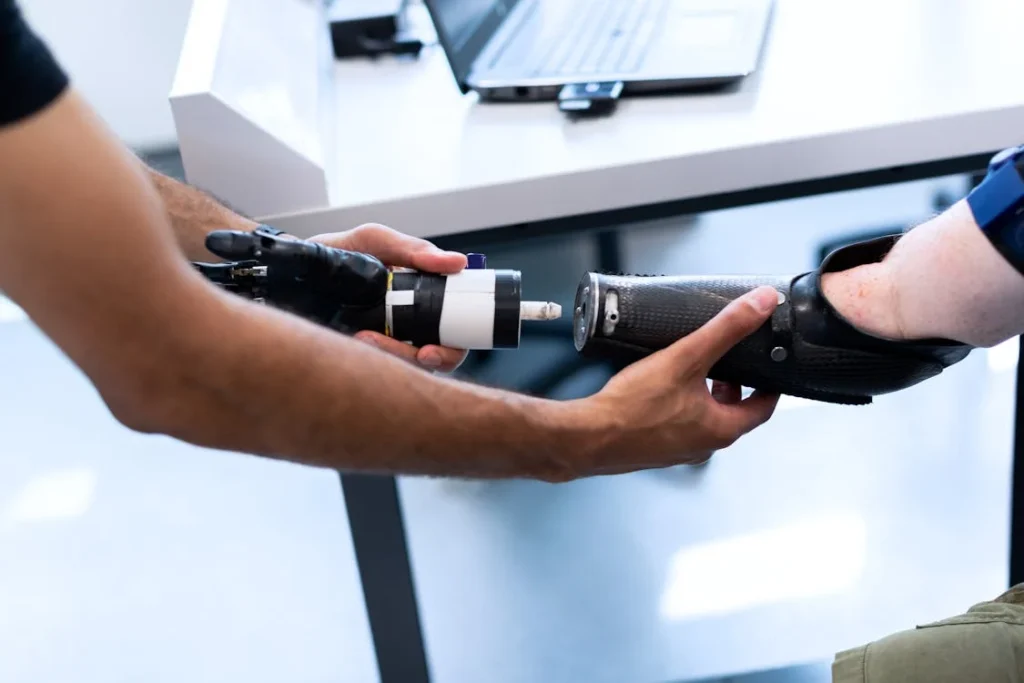
Working With Professionals for Long-Term Success
Building a Relationship With Your Child’s Prosthetist
One of the most important partners in your child’s journey is their prosthetist—the specialist who designs, fits, and adjusts the prosthetic limb. This is not just a one-time visit.
As your child grows, becomes more active, or develops new needs, their prosthetic may need updates, repairs, or complete changes. That’s why it’s helpful to build a long-term, trusting relationship with the prosthetist from the start.
Encourage open communication during every visit. Let your child ask questions, even small ones like “Why does this part feel wobbly?” or “Can it be made softer?” These questions help them feel involved and respected.
When the prosthetist answers clearly and kindly, your child learns that their comfort and opinions matter.
It’s also important to track your child’s comfort over time. If they start walking differently, using the prosthetic less, or avoiding activities they once enjoyed, it could be a sign that the fit needs to be adjusted.
Children often don’t explain these things right away, so watching how they move, play, and rest is key.
Prosthetists can also recommend small additions that make daily use easier, like special padding, straps, or lightweight parts. These little details can make a big difference in how your child feels by the end of a school day or after a play session.
Having regular check-ups—not just when something feels wrong—can prevent problems from building up. As your child grows taller, gains strength, or becomes more active in sports or hobbies, their prosthetic may need to change with them.
Staying in touch with your prosthetist helps you plan ahead, rather than reacting when discomfort sets in.
Including Therapists and Rehabilitation Experts
Alongside your prosthetist, physical and occupational therapists play a big role in your child’s progress. These professionals help your child learn how to move with the prosthetic, strengthen the right muscles, and find safe ways to explore new motions.
They also help with fine-tuning daily tasks like gripping, balance, or walking on uneven ground.
Therapy should never feel like a punishment or chore. A good therapist turns each session into a learning experience that feels fun and supportive.
They may use games, music, or movement activities to help your child feel at ease while practicing important skills.
Over time, your child builds confidence not just in using the prosthetic, but also in their own body. They learn what feels good, when to ask for help, and how to keep growing stronger.
Therapy also gives parents space to ask questions, learn safe exercises to do at home, and understand what to expect next.
Sometimes therapists also help with emotional support. They might notice when your child feels discouraged or scared, and they can guide conversations in a way that makes space for those feelings without letting them become barriers.
Your care team should work together—prosthetist, therapist, doctor, and of course, you as the parent. When everyone shares updates and goals, your child gets consistent, thoughtful care.
This teamwork shows your child that they’re surrounded by people who believe in them and want to help them succeed.
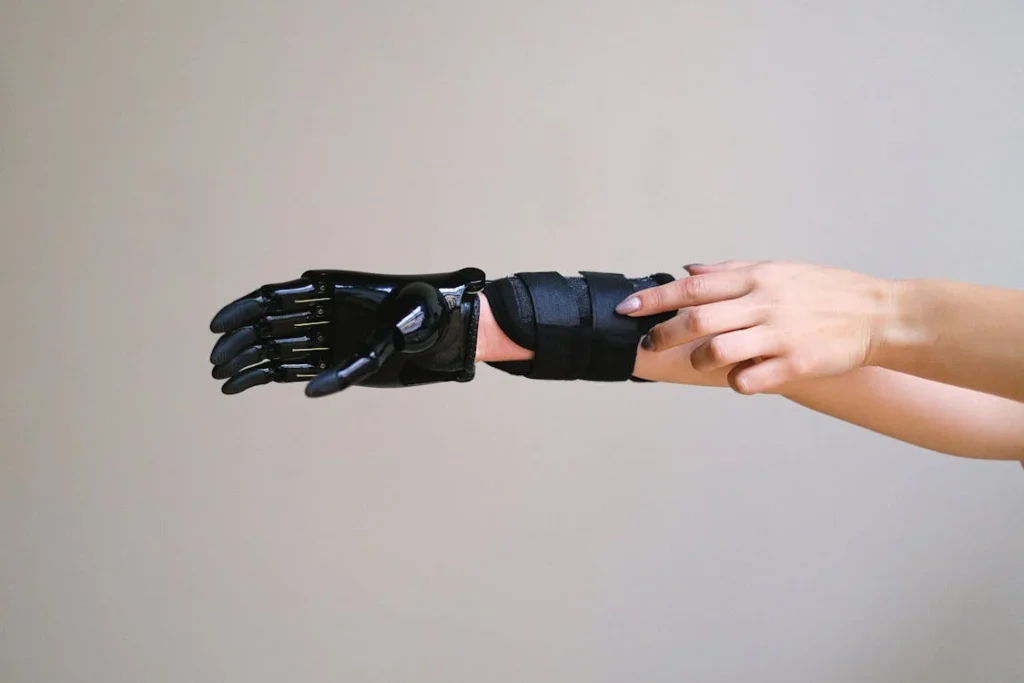
Adapting to School Life With a Prosthetic Limb
Preparing for a Smooth Transition Back to Class
Going back to school after receiving a new prosthetic limb can feel like stepping into a new chapter—for both your child and the people around them.
While the classroom may be familiar, the experience of moving through a school day with a prosthetic is new and often filled with small challenges. Preparing ahead of time can make the transition smoother and help your child feel more at ease.
Start by having a calm, open talk with your child about how school might feel different now. Let them share what they’re excited about and what they may be nervous to face.
Talk through daily routines—like climbing stairs, opening their locker, sitting through long classes, or joining in during sports—and explore what might feel easier or harder now.
If your child has concerns, try problem-solving together. If they’re unsure about how to carry their bag or hold lunch trays, practice at home.
If they’re worried about sitting comfortably in class, visit the school ahead of time and speak with the teacher about seating options. These small actions help your child feel more prepared and in control.
It’s also a good idea to reach out to school staff. Speak with the principal, teachers, and support workers to make sure they understand your child’s needs.
Let them know if your child needs more time between classes, help with physical education, or access to a quiet place to rest if needed. Clear communication builds trust and allows the school to be a true partner in your child’s progress.
Supporting Social Comfort in a Classroom Setting
Beyond physical movement, school is a place where children build friendships, navigate group activities, and learn how to feel confident in social settings.
When a child is adjusting to a new prosthetic, these moments can feel more intense. They may worry about being asked questions or being treated differently by classmates.
You can help by practicing simple, comfortable ways your child can respond when someone asks about their prosthetic.
For example, your child might say, “It helps me walk,” or “It’s like my superhero leg.” Giving them the language to explain—without pressure—helps them feel more in control during social interactions.
Let your child decide how much they want to share with classmates. Some children are happy to talk about their prosthetic openly.
Others prefer to stay private. There’s no right or wrong choice—what matters is helping your child feel safe and supported in their decision.
Teachers also play a key role. If possible, ask your child’s teacher to gently guide class discussions about respect, kindness, and curiosity.
Not by pointing out your child, but by teaching values that create a caring classroom for everyone. This way, the class becomes a space where differences are welcomed, not singled out.
Friendships may shift during this time. Some friends may become more supportive, while others may not know how to respond. Encourage your child to stay connected to peers who make them feel good and accepted.
Over time, their confidence will return—not just in how they move, but in how they show up in the world.
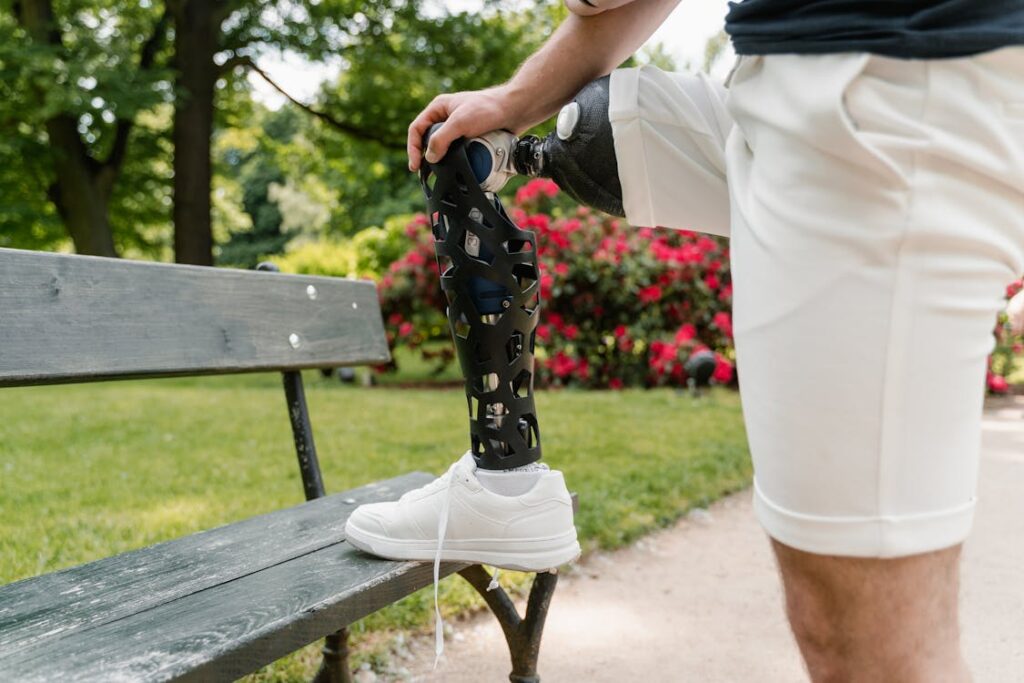
Encouraging Independence Through Daily Challenges
Turning Small Tasks Into Confidence Builders
One of the most effective ways to help a child adjust to a new prosthetic limb is by encouraging independence.
Not in the sense of doing everything alone, but in giving them chances to try things, make choices, and learn what they are capable of. It’s often the little, everyday tasks that provide the biggest boosts in confidence.
Simple actions like getting dressed, brushing hair, or putting on shoes can seem small, but they take practice with a new prosthetic. Rather than rushing to help every time, give your child space to try first.
Let them struggle a little if it’s safe to do so. Success, even after several tries, is much more rewarding than something done for them right away.
Children can surprise you with their adaptability. They might find new ways to solve a problem, like using their other hand differently or adjusting their balance when standing up. These are important moments of growth.
Let your child take the lead when they want to, and gently guide them when they ask for help. The goal is to create a rhythm where trying becomes normal and small wins are part of the routine.
At mealtimes, bath times, or during play, invite your child to participate as fully as possible. If pouring water is tricky at first, let them pour a little at a time. If picking up toys takes effort, turn it into a game.
Each action they complete on their own teaches them that they can manage the world around them, step by step.
Giving Responsibility Without Pressure
Independence also means trusting your child with small responsibilities. These should match their age, ability, and interest, and be introduced gently.
For example, you might ask them to carry their school bag to the car, help pack their lunch, or remember to bring their prosthetic accessories when going out. These tasks create a sense of ownership, not just of the limb, but of their daily life.
This approach helps shift the child’s focus away from what is different about them, and toward what they can control. It also helps prepare them for future independence—at school, in social settings, and eventually in the workplace or community.
Of course, there will be moments when tasks are difficult or the prosthetic feels limiting.
Your role is not to erase those feelings, but to remind your child that asking for help is also a strength. Independence is not about doing everything alone. It’s about knowing when to try, when to adapt, and when to reach out.
By allowing your child to build confidence through daily tasks, you’re laying the foundation for a strong sense of self.
They begin to understand that their prosthetic is not something that holds them back—it’s something that helps them move forward, in their own way.
Conclusion
Helping your child adjust to a new prosthetic limb is a journey filled with patience, small wins, and steady encouragement. It’s not about rushing progress but about creating a safe, loving space where your child can explore, learn, and grow at their own pace.
Every step—whether it’s learning to walk, picking up a toy, or going back to school—adds to your child’s confidence. The key is to support without pressure, listen without judgment, and celebrate effort more than results.
A prosthetic limb is not just a tool. It becomes part of how your child experiences the world. With your guidance, and the support of professionals and peers, your child can move forward not just with ability—but with pride.
Their strength is already within them. Your belief helps them see it.



